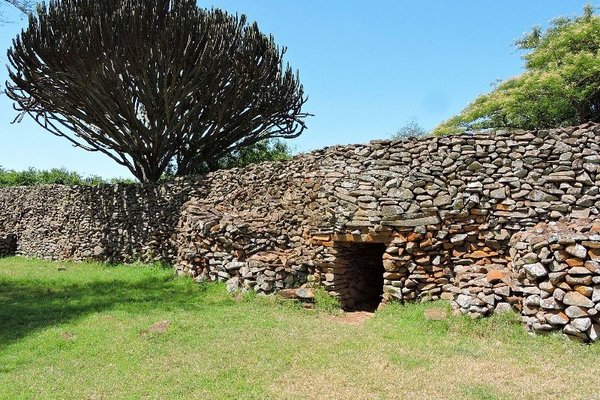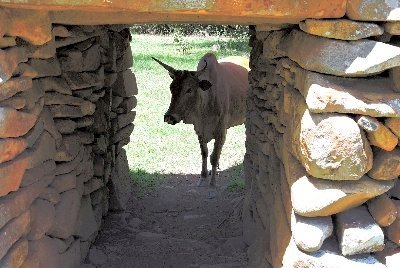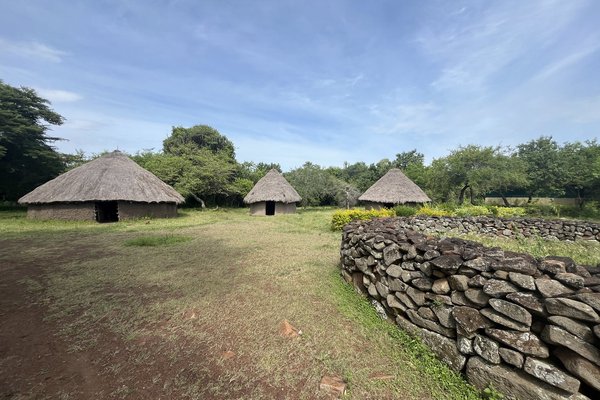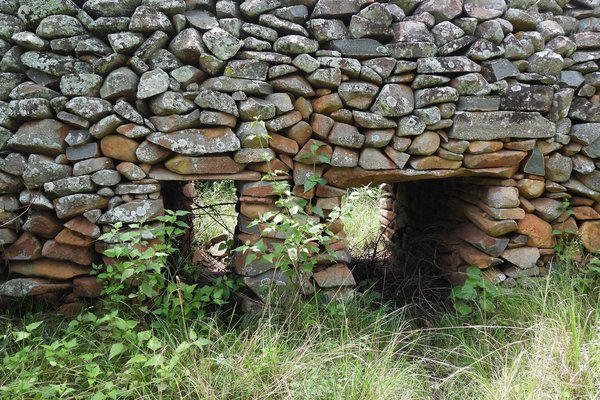Kenya
Thimlich Ohinga
Thimlich Ohinga archaeological site comprises 4 larger fortified settlements that are the best-preserved examples of pure dry stone building in the Lake Victoria Basin.
The dry stone wall enclosures incorporated shared communal settlements (Ohingni) with homesteads, livestock and craft industries. They were founded by the early pastoral communities of the Lake Victoria Basin from the 16th century CE onward.
Community Perspective: “The effort of reaching the site may be greater than the payoff”, but Michael did so anyway – on his bike. Els has detailed the approach by 4x4 car from Kisumu, while Randi did so for the tougher southern route from Masai Mara's Musiara Gate.
Site Info
Official Information
- Full Name
- Thimlich Ohinga Archaeological Site (ID: 1450)
- Country
- Kenya
- Status
-
Inscribed 2018
Site history
History of Thimlich Ohinga
- 2018: Inscribed
- Inscribed
- 2015: Referred
- 2014: Incomplete - not examined
- Type
- Cultural
- Criteria
- iii
- iv
- v
Links
- UNESCO
- whc.unesco.org
All Links
UNESCO.org
- whc.unesco.org — whc.unesco.org/
News Article
- Jan. 22, 2019 standardmedia.co.ke — Lack of toilets, eatery dents appeal of Thimlich Ohinga
- July 1, 2018 the-star.co.ke — Migori residents excited after Thimlich Oinga added to World Heritage List
Community Information
- Community Category
- Archaeological site: Civilizations of Sub-Saharan Africa
Travel Information
One thousand visitors or fewer
Recent Connections
-
Foreigner prices
500 KSh for foreigners, 100 KSh for Ken… -
Granaries
"The enclosures also feature smaller si… -
Ancient Board Games
"The north-eastern side of the main enc…
Connections of Thimlich Ohinga
- Trivia
-
-
Minority communities
"Today, the area around the site is predominantly inhabited by self-identifying Luo people, whose language Dholuo belongs to the Western Nilotic branch of the Nilo-Saharan language phylum. The Luo attribute significance to the property and because of this relation, Thimlich Ohinga has often been considered a historic Luo site. However, historical research and oral tradition attest to a diversity of occupants and interaction of different peoples." (AB ev)
-
- Architecture
-
-
Made out of basaltic material
"Thimlich Ohinga was constructed using unshaped and random loose stones made from local basalt." (wiki)See en.wikipedia.org
-
Dry Stone Construction
"Thimlich Ohinga archaeological site is a dry-stone walled settlement" (OUV)
-
- World Heritage Process
- Religion and Belief
-
-
Taboo
"Traditional rules and taboos established by the community elders also contribute to site protection and monitoring processes" (AB ev)
-
- Human Activity
-
-
Pastoralism
traditional settlement forms of agro-pastoral communities (AB ev) -
Ancient Board Games
"The north-eastern side of the main enclosure at Thimlich Ohinga has a recreational games section where a Mancala like board game, locally known as ajua, is curved into the rock surface" (wiki)See en.wikipedia.org
-
Iron production
"A designated industrial area lies just outside the northern wall of the main enclosure. Here iron smelting and working took place, as indicated by the presence of a furnace area containing smooth stones that could have acquired that texture as a result of being used as anvils. Pieces of tuyere litter the area and there is also a mound of iron slag, refuse and pottery." (AB ev)
-
- Constructions
-
-
Granaries
"The enclosures also feature smaller side forts which contained houses, dining areas, animal pens, and granaries." (wiki)
-
- WHS on Other Lists
-
-
World Monuments Watch (past)
Thimlich Ohinga Cultural Landscape (2000, 2002)
-
- Timeline
-
-
Built in the 16th century
the period of construction and occupation of the site is likely to be between 1590 and 1680 (AB ev)
-
- Visiting conditions
-
-
Foreigner prices
500 KSh for foreigners, 100 KSh for Kenyan residents -
One thousand visitors or fewer
247 in 2011, of which 48 were foreigners.
-
- WHS Names
-
-
Untranslated Toponyms
Ohinga means "settlement" in Lwoo. The AB ev states "Ohinga (Ohingni-plural) on the other hand, is a form of earth/stone built settlement or enclosure found in large numbers within the Lake Victoria region.".
-
News
- standardmedia.co.ke 01/22/2019
- Lack of toilets, eatery dents appe…
- the-star.co.ke 07/01/2018
- Migori residents excited after Thi…
Community Reviews
Show full reviews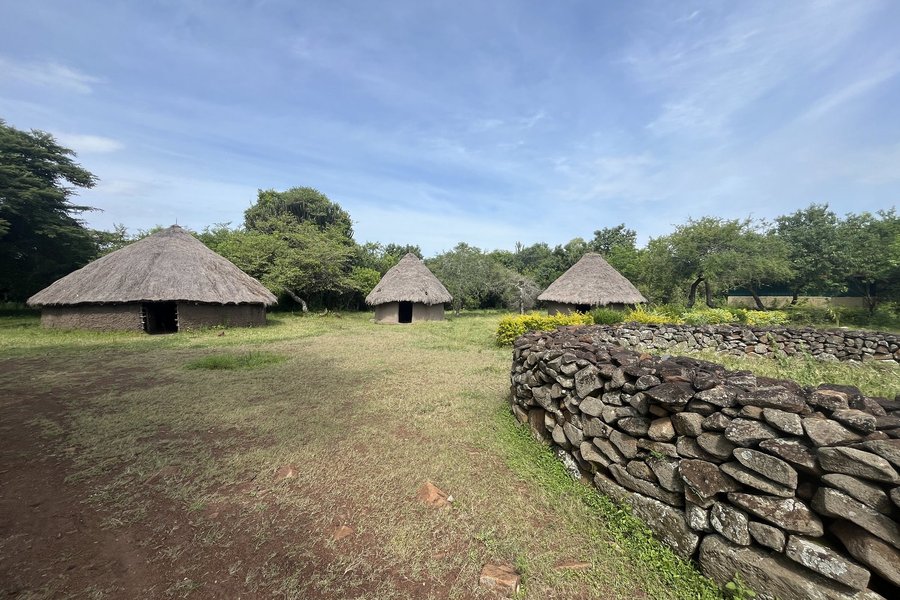
Even seven years after its inscription as a WHS, Thimlich Ohinga is still one of the 20 least visited by our members. Only three were there before me, and this low popularity was confirmed by looking at the visitors’ book, as it showed about 10 entries per month for 2025. The site just lies too far from the general Kenyan tourist itineraries, which focus on the East Coast beaches and the safari parks in the center. It is close to Lake Victoria, though, and has a fine rural setting.
I got there with a driver/guide from the hub of Kisumu (Kenya’s 4th largest city), which has daily flights to Nairobi and decent places to stay, eat and shop. It took us 3 h 20 min to reach the site. The distance is only 163 km, but the final 19 km is on an unpaved road - sand with some stones and holes, but doable with a 4x4. From that road, Thimlich is signposted as well. After about 12km, the road beyond on was flooded (this may not be the case when you arrive later in the dry season) – a passer-by showed us a detour, which was also clearly visible on maps.me.
While all of Kenya has gone digital, this site accepts cash payment only. The fee for foreigners is 500 KSh (3,50 EUR) at the moment. Later, I learned that the staff feels abandoned by the National Museums of Kenya and the Province; there’s no electricity or running water …
Keep reading 0 comments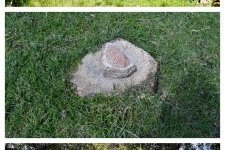
Tucked away in the far western corner of Kenya lies Thimlich Ohinga, hidden deep in the countryside. Although it’s been seven years since the site was inscribed on the World Heritage List, very few community members or tourists seem to make their way out here. A fun fact: Els visited just a week before us, and according to the visitor book, only seven people had been there in the meantime.
Unlike another reviewer, we approached the site from the Masai Mara via the Musiara Gate. After spending two nights in the park and enjoying a morning safari, we left the gate at 10 a.m. We had expected paved roads once we reached the main road — but we were far off the beaten track, and the road conditions were often very poor. The roads only began to improve after we entered Migori County. The final 14 kilometers to the site, coming from the south, were again on rough dirt roads — not in the best shape either. A high-clearance vehicle was definitely necessary. The 130-kilometer drive from Musiara Gate to the site took just over four hours. We arrived around 2:15 p.m. and were warmly welcomed at the entrance as the first visitors of the day.
The visit itself lasted about 1 to 1.5 hours. We paid 500 KES per person, and the same man who greeted us at the gate also served as our guide. We explored all four enclosures that make up the inscribed heritage site. …
Keep reading 0 comments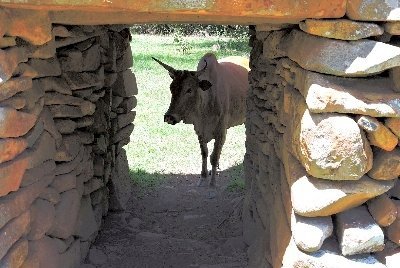
Visit in January 2021
To partially compensate for being forced to cancel plans for visits to many top-level Sites in 2020 I intended to make visits to a few unreviewed, or seldom-visited Sites. As it turned out, most of those sites were unreviewed for good reasons, especially because onerous bureaucracy and remote locations made reaching them impractical, or impossible. The best I could come up with was a visit to Thimlich Ohinga, a Site that was unvisited primarily because it was only recently inscribed, in 2018. The Site is located in the southwestern corner of Kenya, in an area where sugarcane is the dominant farm crop, and which was pleasantly green during that time of year. However, while travel around that part of the country is straightforward enough, reaching the Site itself will likely be a lengthy process, no matter from which direction one approaches, and the effort may be greater than the payoff. Traveling to the vicinity from Nairobi, probably via the Kenya Lakes System Site, would be relatively simple, but still a rather long haul. It would probably be easier to reach the Site from the western gates of the Serengeti, in Tanzania. However, in that case most people would need visas for both countries.
Since I was arriving from the northwest, I decided to stay in the small town of Rodi Kopany, which is 46 km to northeast of the Site and has a couple of decent accommodation options, and then ride down to the …
Keep reading 0 comments
